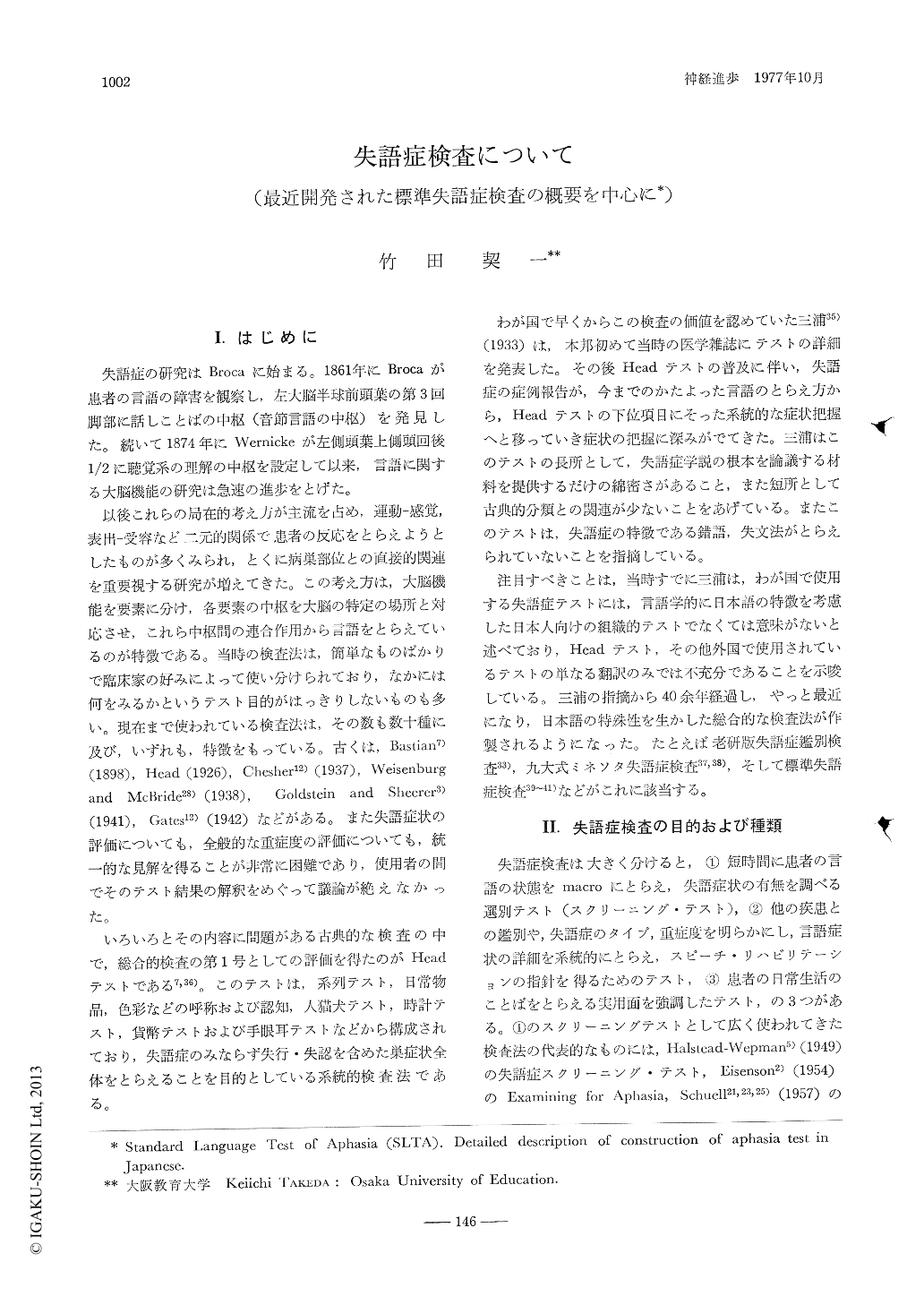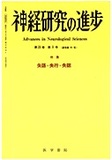Japanese
English
- 有料閲覧
- Abstract 文献概要
- 1ページ目 Look Inside
I.はじめに
失語症の研究はBrocaに始まる。1861年にBrocaが患者の言語の障害を観察し,左大脳半球前頭葉の第3回脚部に話しことばの中枢(音節言語の中枢)を発見した。続いて1874年にWernickeが左側頭葉上側頭回後1/2に聴覚系の理解の中枢を設定して以来,言語に関する大脳機能の研究は急速の進歩をとげた。
以後これらの局在的考え方が主流を占め,運動—感覚,表出—受容など二元的関係で患者の反応をとらえようとしたものが多くみられ,とくに病巣部位との直接的関連を重要視する研究が増えてきた。この考え方は,大脳機能を要素に分け,各要素の中枢を大脳の特定の場所と対応させ,これら中枢間の連合作用から言語をとらえているのが特徴である。当時の検査法は,簡単なものばかりで臨床家の好みによって使い分けられており,なかには何をみるかというテスト目的がはっきりしないものも多い。現在まで使われている検査法は,その数も数十種に及び,いずれも,特徴をもっている。
A comprehensive battery of test for aphasia was constructed by Japan Aphasia Study Group in 1975. Before that, there was few methods of examination existed which were comprehensive enough to yield sufficient information or sensitive enough to measure speech and language disturbances of aphasics.
As the preliminary study of construction of Standard Language Test of Aphasia (SLTA), we, the members of Aphasia Study Group, explored responses to various kinds of testings, such as LMTA, MTDDA, PICA, NCCEA, the Token Test, Eisenson's test, FCP and others.

Copyright © 1977, Igaku-Shoin Ltd. All rights reserved.


